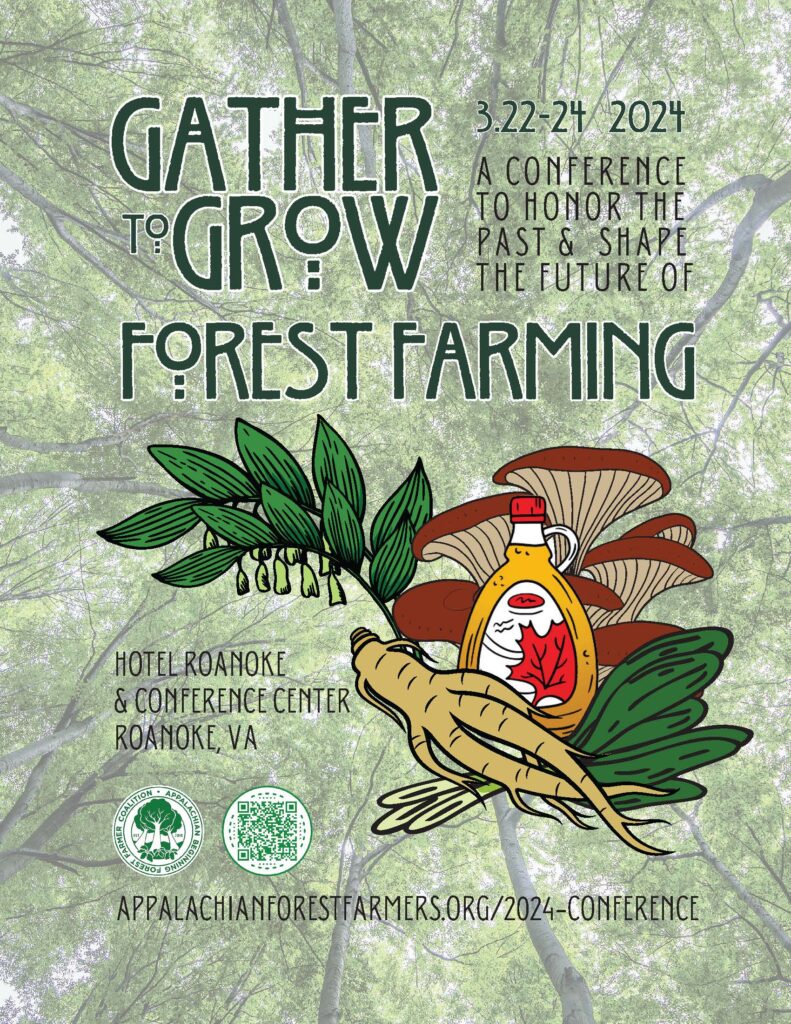Forest Farming Resources and 2024 Conference
go.ncsu.edu/readext?975361
en Español / em Português
El inglés es el idioma de control de esta página. En la medida en que haya algún conflicto entre la traducción al inglés y la traducción, el inglés prevalece.
Al hacer clic en el enlace de traducción se activa un servicio de traducción gratuito para convertir la página al español. Al igual que con cualquier traducción por Internet, la conversión no es sensible al contexto y puede que no traduzca el texto en su significado original. NC State Extension no garantiza la exactitud del texto traducido. Por favor, tenga en cuenta que algunas aplicaciones y/o servicios pueden no funcionar como se espera cuando se traducen.
Português
Inglês é o idioma de controle desta página. Na medida que haja algum conflito entre o texto original em Inglês e a tradução, o Inglês prevalece.
Ao clicar no link de tradução, um serviço gratuito de tradução será ativado para converter a página para o Português. Como em qualquer tradução pela internet, a conversão não é sensivel ao contexto e pode não ocorrer a tradução para o significado orginal. O serviço de Extensão da Carolina do Norte (NC State Extension) não garante a exatidão do texto traduzido. Por favor, observe que algumas funções ou serviços podem não funcionar como esperado após a tradução.
English
English is the controlling language of this page. To the extent there is any conflict between the English text and the translation, English controls.
Clicking on the translation link activates a free translation service to convert the page to Spanish. As with any Internet translation, the conversion is not context-sensitive and may not translate the text to its original meaning. NC State Extension does not guarantee the accuracy of the translated text. Please note that some applications and/or services may not function as expected when translated.
Collapse ▲Harvesting medicinal plants from the forest has deep cultural roots in Appalachia. Today, the practice of forest farming native plants such as ramps, goldenseal, black cohosh, and ginseng continues this botanical legacy. By intentionally cultivating these prized species in designated areas, harvesting pressure on wild plant populations is reduced, and landowners create an additional income stream for non-timber forest products that supply local, regional, and perhaps even international markets.
As a landowner in the Asheville area, an interest in medicinal herbs will lead you to the WNC Medicinal Herb Growers, an organized group of researchers, NC Extension educators, herb farmers, and hobby growers focused on the production of medicinal herbs in both the forest and field settings. This group provides workshops and events throughout the growing season to broaden the field of knowledge surrounding herb production, which continues to be a popular research area through NC State Extension. Another regional group, the Appalachian Beginning Forest Farmers Coalition (ABFFC) is an important resource for growers in the southeastern region.
If you’re interested in diving into the world of forest botanicals this winter season, be sure to take advantage of early bird registration rates for ABFFC’s inaugural Gather to Grow Forest Farming Conference, to be held March 22-24, 2024. This conference is based in Roanoke, and features learning, networking, and strategic planning programs that will shape the future of forest farming of woodland crops such as botanicals, mushrooms, and decorative products in Appalachia. Early bird registration rates end January 15, 2024, so be sure to register early – for full details about the conference visit: https://www.appalachianforestfarmers.org/2024-conference





